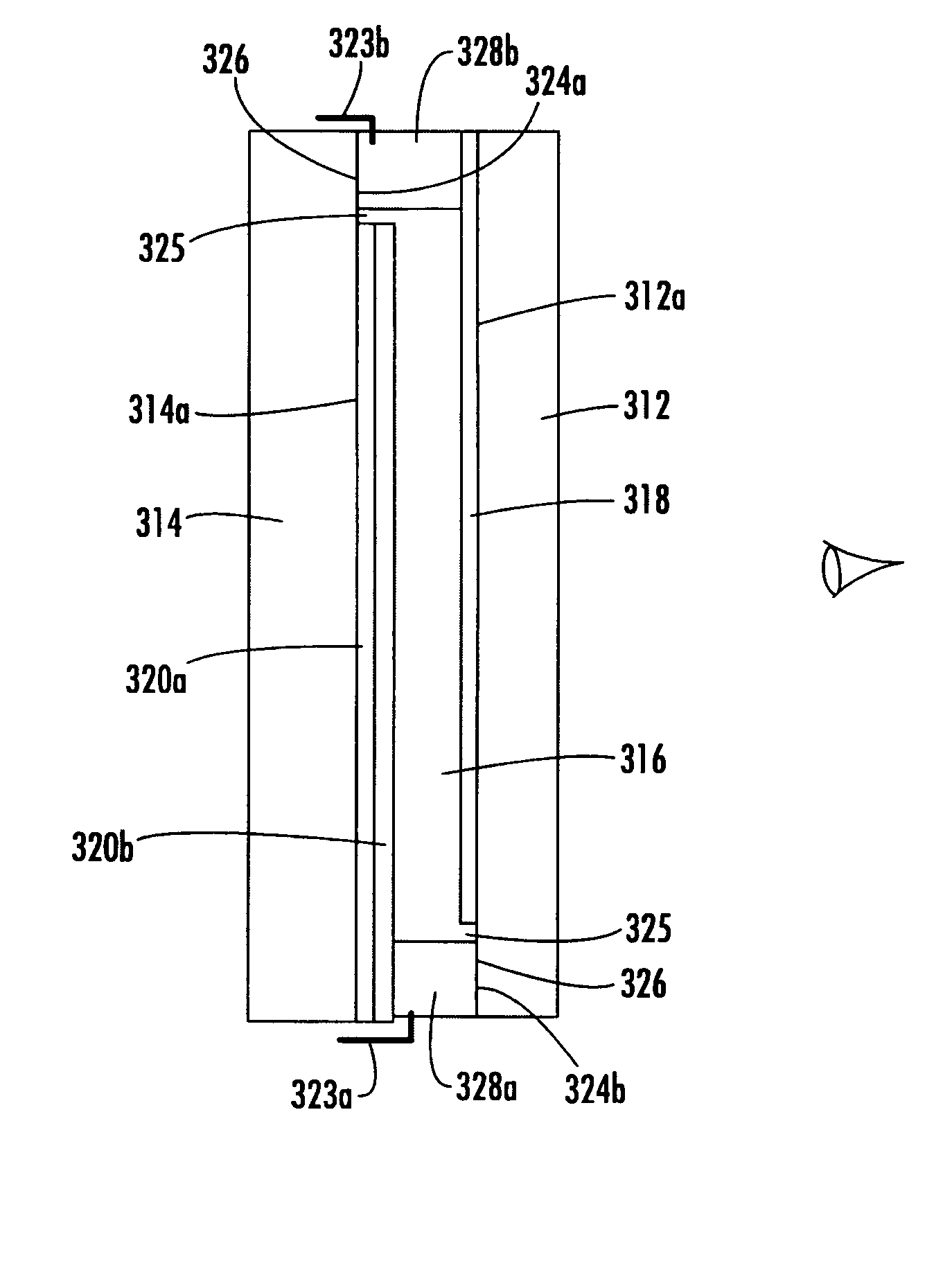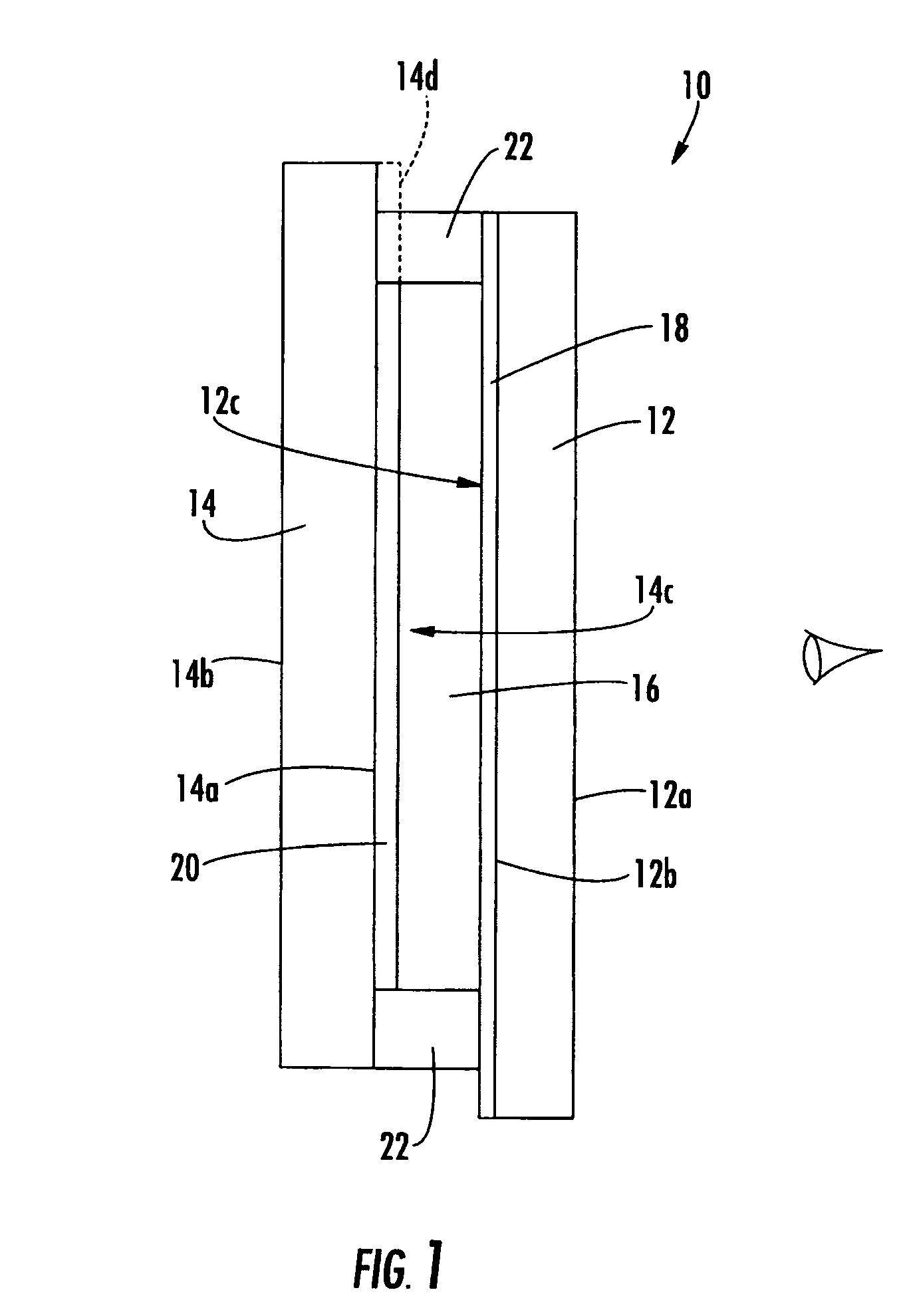Electro-optic mirror cell
- Summary
- Abstract
- Description
- Claims
- Application Information
AI Technical Summary
Benefits of technology
Problems solved by technology
Method used
Image
Examples
Embodiment Construction
[0080] Referring now to the drawings and the illustrative embodiments depicted therein, a mirror reflective element assembly or cell 10 for an interior or exterior rearview mirror assembly of a vehicle includes a first or front substrate or glass element 12 and a second or rear substrate or glass element 14 (FIG. 1). The rear reflective element substrate 14 is spaced from front reflective element substrate 12, and the cell includes an electrolyte or monomer composition or electrochromic medium 16 and conductive or semi-conductive layers 18, 20 (described below) sandwiched therebetween. An epoxy seal material 22 or the like, is applied between the substrates to define the cavity for the electrochromic medium and to adhere the substrates together. The substrates may be adhered together while in a sheet form with other substrates or mirror shapes, as discussed below.
[0081] The present invention provides a process that adheres the mirror shapes together with the epoxy seal before the f...
PUM
 Login to View More
Login to View More Abstract
Description
Claims
Application Information
 Login to View More
Login to View More - R&D
- Intellectual Property
- Life Sciences
- Materials
- Tech Scout
- Unparalleled Data Quality
- Higher Quality Content
- 60% Fewer Hallucinations
Browse by: Latest US Patents, China's latest patents, Technical Efficacy Thesaurus, Application Domain, Technology Topic, Popular Technical Reports.
© 2025 PatSnap. All rights reserved.Legal|Privacy policy|Modern Slavery Act Transparency Statement|Sitemap|About US| Contact US: help@patsnap.com



